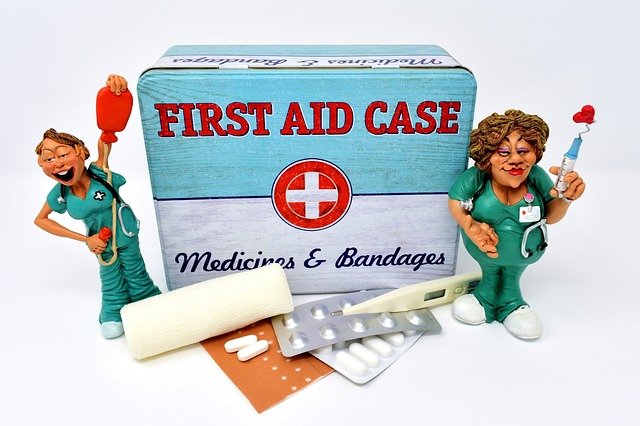Essential First Aid Tips and Procedures for Any Emergency
Injuries are almost unavoidable during emergencies. You might be harmed by the event itself—for example, suffering burns in a fire or being struck by falling debris during an earthquake. However, many injuries also occur amid the chaos that follows. In the rush to escape danger, it’s easy to sprain an ankle or sustain an open wound. Click here for first aid course
It’s essential to remember these ten golden rules of first aid. Even if you’re not the one injured, you may encounter someone who is and needs immediate assistance.
Always seek professional medical help for anyone who’s hurt. In some emergencies, first responders may not be available right away, so do your best to provide basic care until help arrives. However, keep in mind that serious injuries require advanced medical attention, and you should priorities getting the injured person to trained professionals as soon as possible.
Still, these simple first aid techniques can make a significant difference in stabilizing someone who’s hurt. With just a few items from your survival kit and proper application, you can provide effective initial care.
1. Objectives
These objectives may seem straightforward—but that’s intentional. In an emergency, panic can easily take over, making it difficult to remember the right steps to take. The Three P’s serve as a simple yet powerful reminder of what matters most: do what you can to save a life, prevent additional harm, and support the healing process.
2. Check the Scene for Danger:
Before offering assistance to an injured person, always assess the scene for potential hazards. You must ensure your own safety first—this isn’t an act of hesitation or fear, but a matter of practicality. If you become injured, you won’t be able to help anyone else. Take a moment to scan the area carefully and identify anything that could put you at risk.
For instance, imagine there’s a severe storm and you notice someone outside who’s hurt and unable to reach safety. Before rushing out to help, look for possible dangers: Are strong winds throwing debris? Are nearby trees or structures unstable? Are there downed power lines or floodwaters?
By evaluating these risks first, you can plan a safer and more effective way to reach and assist the injured person. for more blogs click here
3. Treating Cuts and Scrapes:
Blood is essential to life, so when someone is bleeding, your main goal is to minimize blood loss. Start by finding a clean cloth or sterile bandage, then follow these steps:
If the person has a nosebleed, have them lean slightly forward and press a cloth or tissue against the nostrils until the bleeding stops.
Most minor cuts and scrapes heal quickly with basic care. However, deeper wounds need extra caution:
• Continue applying firm pressure to control bleeding.
• Avoid using ointments; instead, cover the wound loosely with clean fabric to prevent contamination.
• Seek professional medical help as soon as possible.
4. Treating Sprains:
Sprains are generally minor injuries that tend to heal with time, but there are steps you can take to reduce pain and swelling. Swelling occurs due to increased blood flow to the injured area, and applying ice can help minimize it by constricting blood vessels.
5. Treating Heat Exhaustion
Heat exhaustion happens when someone is exposed to high temperatures for an extended period—especially during physical activity or when they haven’t had enough fluids. Common symptoms include:
• Move the person to a shaded or cool area, away from direct sunlight.
• If no shade is available, use any available material—like a jacket, tarp, or blanket—to shield them from the sun.
• Give them water or an electrolyte drink to rehydrate.
• Place a cool, damp cloth on their forehead or neck to help lower body temperature.
Treating Burns:
Before providing care for a burn, it’s important to determine the type and severity of the injury. There are four main categories of burns:
First-Degree Burn: Affects only the outer layer of skin. The area appears red, swollen, and resembles a mild sunburn.
Second-Degree Burn: Reaches deeper layers of skin, causing blistering, swelling, and intense pain.
Third-Degree Burn: Destroys all layers of skin, leaving the area white, charred, or blackened. Because nerve endings are often damaged, pain may be minimal despite the severity.
Fourth-Degree Burn: Extends through all skin layers into the underlying tissue, muscles, tendons, and even bones.
8. Allergic Reactions
An allergic reaction occurs when the body overreacts to a foreign substance, such as insect stings, certain foods, or specific medications. A severe and potentially life-threatening reaction, known as anaphylaxis, can result from these triggers.
The most effective emergency treatment for a severe allergic reaction is the use of an EpiPen (epinephrine auto-injector), which delivers a dose of epinephrine to counteract the reaction.
If someone is having an allergic reaction:
• Keep the person calm and check if they carry an EpiPen.
• Have them lie on their back with their feet elevated about 12 inches.
• Loosen any tight clothing to help them breathe more easily.
9. Treating Fractures
Sometimes a fractured bone is obvious, but other times it may not be immediately apparent. If you suspect someone has a fracture:
• Do not attempt to straighten the injured limb.
• Stabilize the area using a splint or padding to prevent movement.
• Apply a cold pack to reduce swelling, but never place it directly on the skin—wrap it in a cloth or use a plastic bag.
• Keep the injured area elevated if possible.
• Provide an anti-inflammatory medication, such as ibuprofen, to help manage pain and swelling.
10. Performing CPR
CPR, or cardiopulmonary resuscitation, is a lifesaving procedure used to restore breathing and circulation in an unresponsive person. While CPR can be critical in emergencies, it requires proper training, typically offered in a full-day certification course. The American Red Cross provides CPR classes nationwide.
Prepare Yourself with the Right Gear
The techniques outlined above are simple to perform and don’t require formal medical training, yet they can save lives or prevent serious complications for an injured person. Ensure your survival kit includes a well-stocked first aid kit, and remember to check and replenish it annually, replacing any items that have been used or have expired.




Leave a Reply